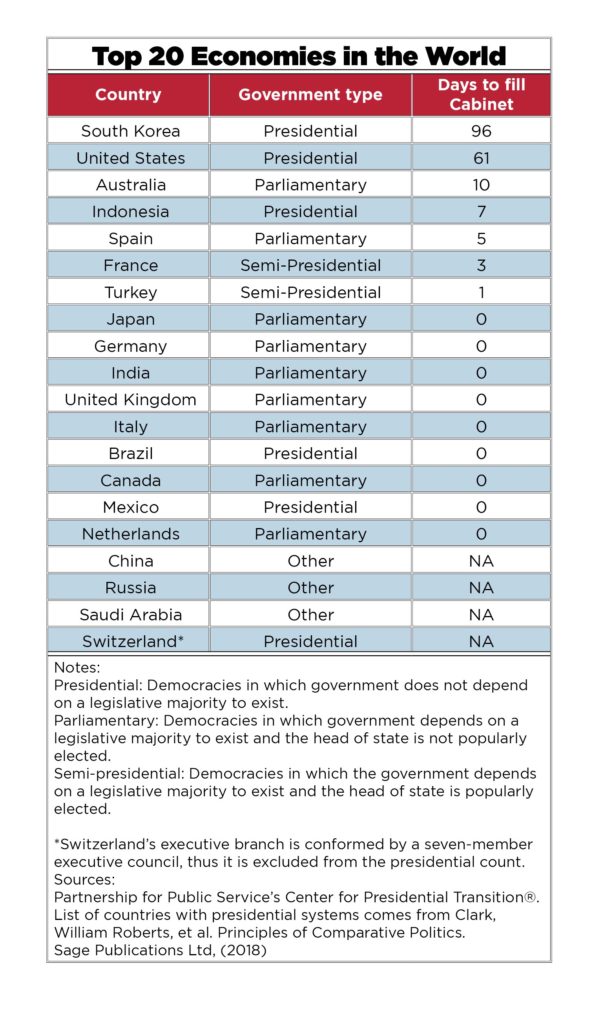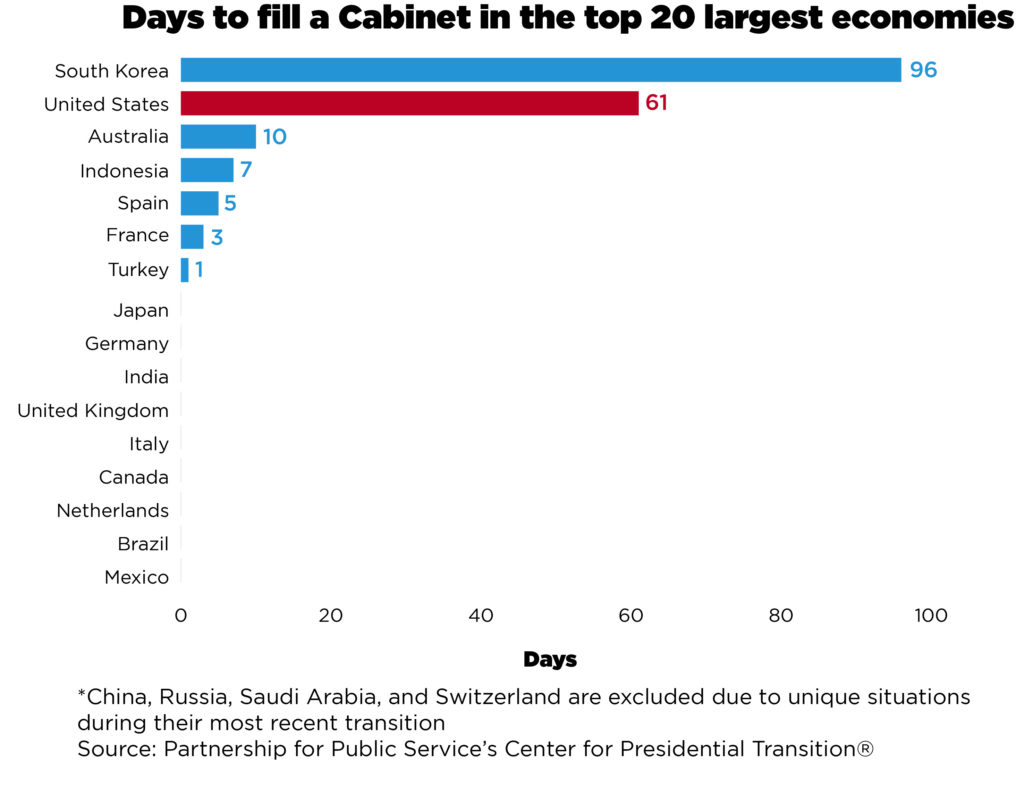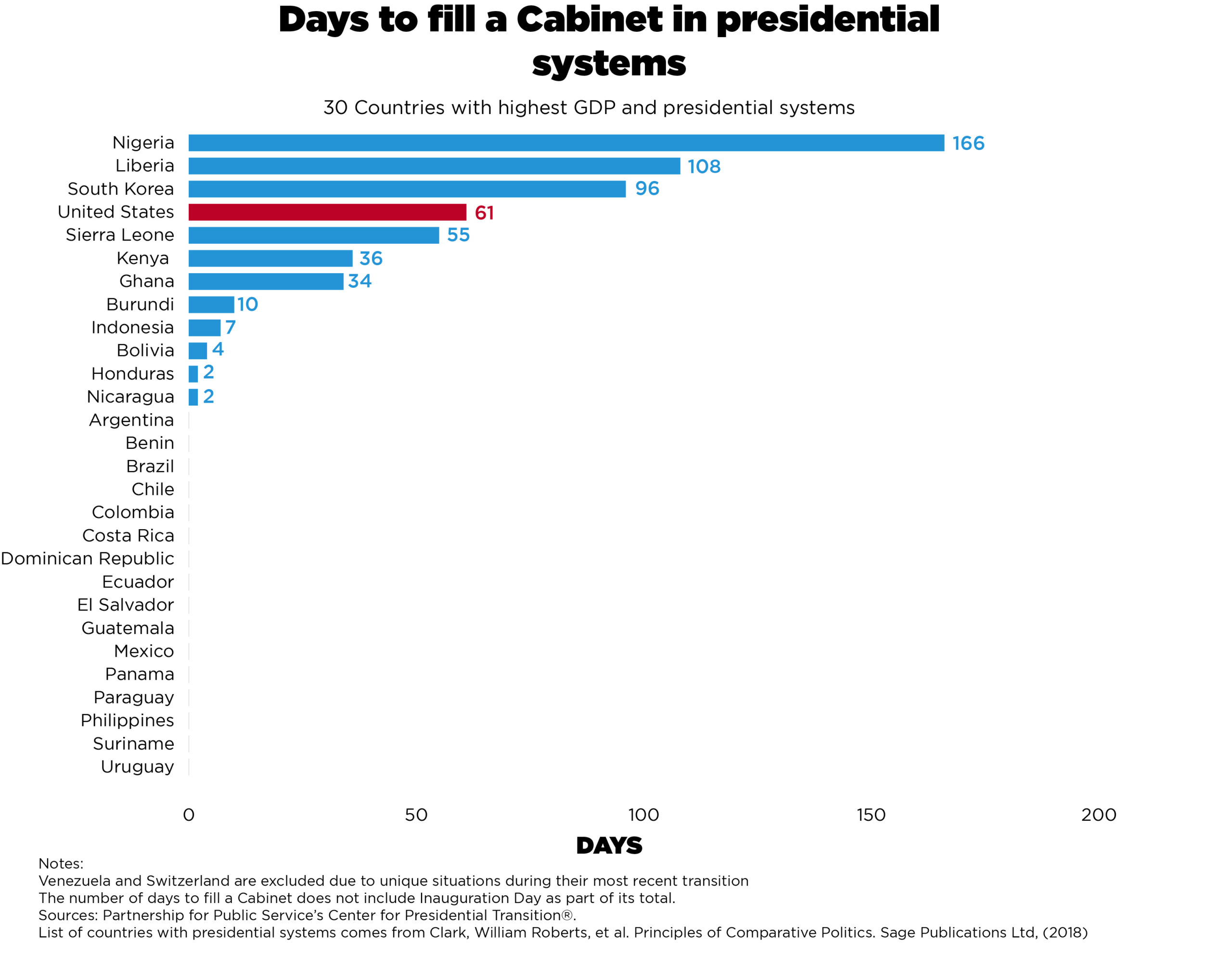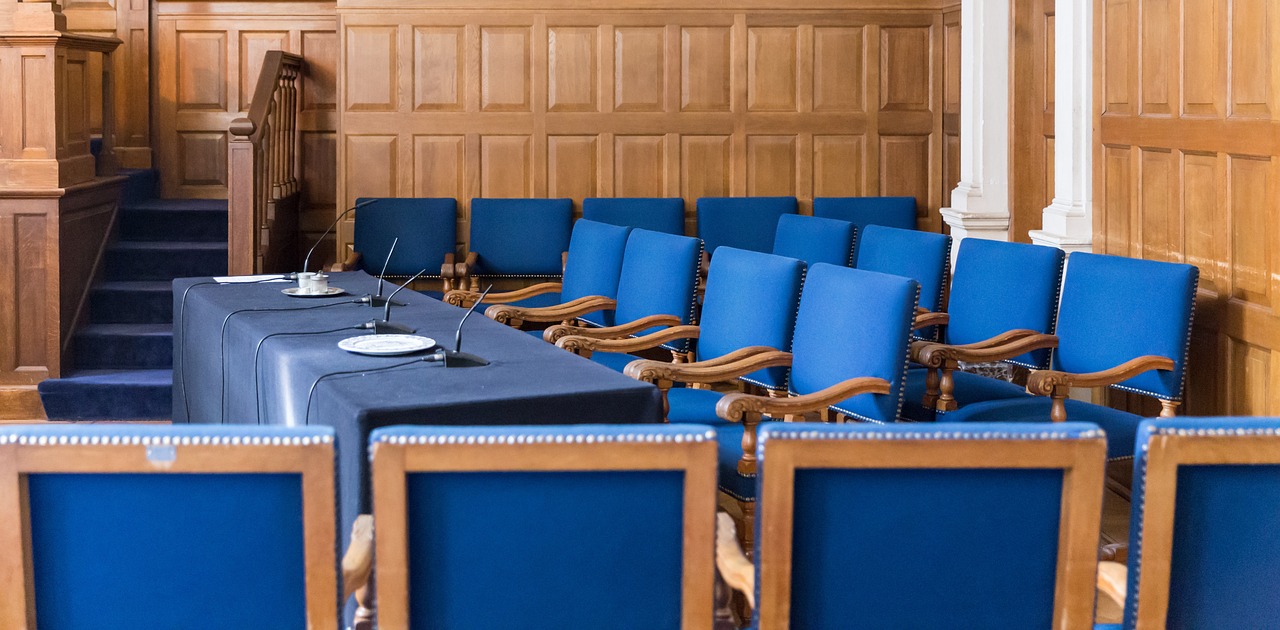Blog
May 05, 2021
The U.S. process for confirming a cabinet takes longer than almost all other countries
By Carlos Galina

With the confirmation of Marty Walsh on March 22 to be secretary of Labor, the Senate approved all of President Joe Biden’s 15 Cabinet statutory nominations in 61 days. How does the U.S. appointment process compare with other countries?
The answer is that the U.S. takes far longer to confirm its executive Cabinet than most other countries.
Among the 20 countries with the highest gross domestic product, the U.S. was the second slowest during the most recent transitions to a new head of state.
Besides having more positions requiring political appointments, the slow confirmation process is largely explained by the fact that the U.S. has a presidential form of government. The Constitution defines this form of governing as having an executive who serves as the head of the government and is separate from the legislative branch. Only six of the 20 largest economies have presidential systems. Many others have forms of government which give the executive more control over the selection of their Cabinet. For example, Canada, Germany and the United Kingdom typically have a prepared list of Cabinet appointees ready for consideration on the day of the executive’s inauguration.
Filling a Cabinet is critical for any new administration to begin governing. Cabinets comprise the secretaries or ministers heading various departments, and executives benefit from having key leadership positions filled quickly in order to execute their agendas. Delays in getting essential staff in place can leave national security planning gaps while slowing policy implementation and personnel decisions.

In the U.S., the length of the confirmation process has varied in recent years. While the Senate took 61 days to confirm Biden’s Cabinet, Presidents Donald Trump and Barack Obama had all of their Cabinet secretaries confirmed in 97 and 98 days, respectively. President George W. Bush’s full Cabinet was confirmed in 12 days and President Bill Clinton’s in 50.
The confirmation of Cabinet officials is an important part of our system of checks and balances, and gives the legislative branch oversight power on parts of the executive branch. However, even when comparing the length of the American process with other countries that have a similar form of government – most of which are much smaller – the American confirmation process is among the longest.
Of the 30 countries with the highest GDP and presidential systems, only three took longer than the U.S. to fill their Cabinet in the most recent transitions to a new head of state: Nigeria (166 days), Liberia (108) and South Korea (96).
According to each country’s constitution, only six of those 30 countries with presidential systems require Cabinet confirmations by a national legislature. By contrast, other presidential systems provide presidents with full responsibility to select, appoint and have their executive team ready to govern on their first day in office. Countries such as Brazil, Chile and 14 others have Cabinets ready to serve on the day of the executive’s inauguration. Some of those countries give their legislatures confirmation authority for positions beyond the executive team, but unlike the U.S., they give the president full power to place most of their top officials.
According to David Lewis, a political scientist at Vanderbilt University, the U.S. has far more political appointees than any other developed democracy. Even though the U.S. confirmation system strengthens the system of checks and balances, delays in confirming Cabinet secretaries can influence staffing and the incoming administration’s capacity to govern. Congress and the White House should consider ways to make the entire confirmation process more efficient.
While the Constitution created a presidential system along with the Senate’s advice and consent role, and while legislative oversight of the president’s nominees is a critical democratic principle, today’s process is longer than almost anywhere else in the world. Steps should be taken to speed up the process so that incoming presidents have key leaders in place on or shortly after Inauguration Day to address the nation’s challenges.
The Center for Presidential Transition would like to thank Frieda Arenos of the National Democratic Institute for offering feedback for this report.



